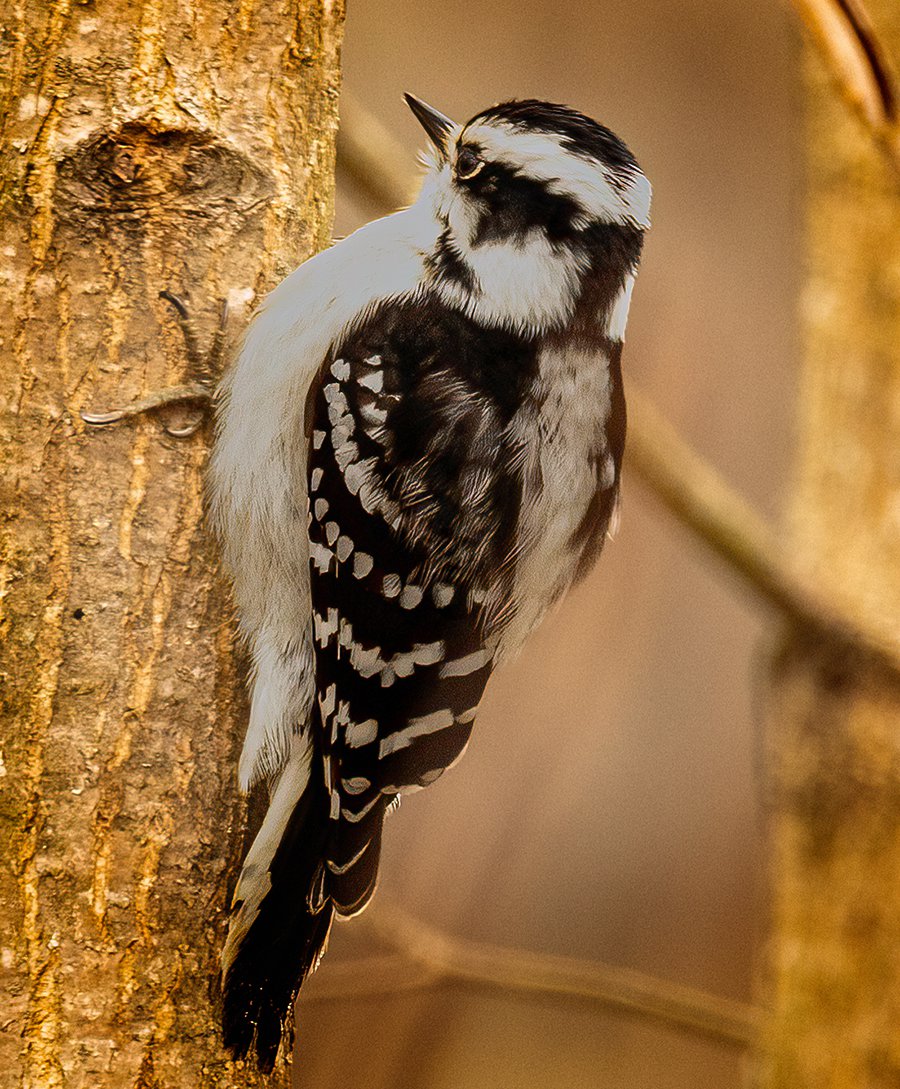Woodpeckers Unleashed: Checking Out the Marvels of These Knowledgeable Tree Mountain Climbers
Woodpeckers, with their unique markings and rhythmic drumming resembling through wooded locations, hold a special place in the bird world. Their specialized makeup and adaptations allow them to navigate upright surfaces with unmatched skill. However, their proficiency of tree climbing is just one element of their fascinating habits. As we look into the intricate information of woodpeckers' nesting habits, feeding strategies, and the continuous preservation efforts to shield these exceptional birds, a much deeper gratitude for their area in nature unravels.
Makeup and Adaptations
When taking a look at the composition and adaptations of woodpeckers, one can observe amazing features that enable these birds to grow in their specialized eco-friendly specific niche. Furthermore, woodpeckers have zygodactyl feet, with two toes encountering onward and 2 facing backward, giving a company hold on tree trunks while they search for food or drum for interaction.
Additionally, woodpeckers have a distinct tongue structure that is long, barbed, and sticky, allowing them to draw out insects from holes in timber. This specialized adjustment enables woodpeckers to exploit a food resource that is unattainable to many various other bird species. Overall, the makeup and adaptations of woodpeckers display the exceptional evolutionary options that have permitted these birds to prosper in their arboreal habitat.
Drumming Habits
Having checked out the anatomy and adaptations of woodpeckers, the emphasis now moves to understanding their drumming habits, a distinctive facet of their communication and territorial display screens. Drumming is a crucial form of communication amongst woodpeckers, serving numerous purposes such as establishing regions, drawing in friends, and signaling alarm. Each woodpecker types has an one-of-a-kind drumming pattern that aids people identify participants of their own varieties and distinguish them from rivals or killers.
Woodpeckers produce drumming noises by swiftly pecking on resonant surfaces such as dead trees, energy posts, or perhaps steel things, creating a series of balanced beats. The strength and speed of drumming can vary based on the objective; as an example, a rapid drumming sequence might indicate aggression towards trespassers, while a slower and softer drumming pattern can indicate courtship (Woodpeckers in Florida). Additionally, woodpeckers may change the regularity and period of their drumming to share specific messages successfully
Nesting Behaviors
Discovering the nesting habits of woodpeckers reveals interesting understandings right into their reproductive actions and habitat choices. Woodpeckers are understood for their special nesting choices, usually excavating cavities in trees to create sheltered spaces for raising their young. These cavities serve not only as a nesting website yet additionally as a secure refuge from killers and stormy weather.
Woodpeckers show a high degree of integrity to their nesting websites, commonly going back to the exact same place every year. This behavior highlights the significance of appropriate habitat availability for their reproductive success. The selection of a nesting website is critical for woodpeckers, with variables such as tree varieties, elevation, and decay stage playing substantial duties in their decision-making procedure.
Remarkably, some woodpecker species are recognized to dig deep into several cavities within their area, supplying themselves with alternate nesting options. This technique may offer as a type of insurance coverage against possible dangers or disturbances to their primary nesting website.

Feeding Techniques
Woodpeckers utilize a selection of specialized feeding techniques to procure their main food resources. Among the most distinctive feeding habits of woodpeckers is drumming, which includes quick pecking on trees to reveal insects beneath the bark. This check out this site drumming not only assists them find target yet additionally functions as a means of communication with other woodpeckers. Woodpeckers have strong, chisel-like beaks that enable them to pierce right into timber easily. When an opening is developed, they utilize their lengthy, barbed tongues to remove pests such as ants, beetles, larvae, and crawlers. These tongues are covered with sticky saliva that aids catch the target. Woodpeckers are additionally recognized to dig deep into dental caries in trees to access hidden insect larvae or sap. Some species, like the acorn woodpecker, store nuts in specially developed openings called granaries. This critical saving of food aids them endure throughout description food shortage periods. Woodpeckers are really amazing in their feeding techniques, showcasing adaptability and intelligence in acquiring their nourishment.
Preservation Initiatives
In the middle of the intricate feeding strategies showed by woodpeckers, the conservation efforts intended at securing these remarkable birds play an essential role in maintaining their environments and populations. Woodpeckers encounter different risks to their survival, consisting of habitat loss due to logging, climate adjustment altering their ecosystems, and crashes with manufactured frameworks such as buildings and vehicles - Woodpeckers in Florida. Preservationists are actively functioning to address these obstacles and guarantee the lasting wellness of woodpecker varieties

Education and learning and public understanding campaigns are additionally important components of woodpecker preservation efforts. By elevating understanding about the relevance of these birds in preserving healthy woodland communities, conservationists can gather support for environment conservation campaigns and promote liable land administration techniques. With joint efforts in between researchers, policymakers, and neighborhood neighborhoods, we can function together to protect a future where woodpeckers thrive in their all-natural habitats.
Final Thought

Comments on “Observing Woodpeckers in Florida: Types Diversity and Distribution”